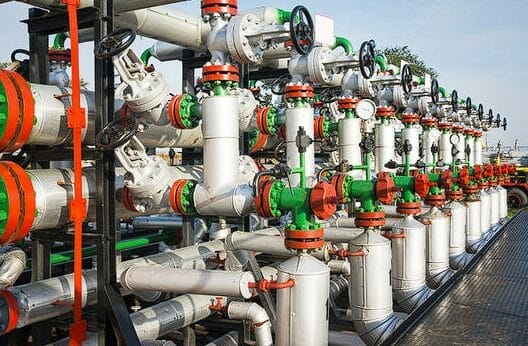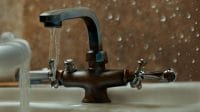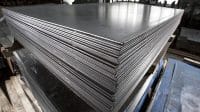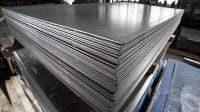Are you in the process of selecting a stainless steel pipe for your next project? Understanding the pressure rating of schedule 10 stainless steel pipes is crucial for choosing the right pipe for your needs. In this comprehensive guide, we will provide an overview of schedule 10 stainless steel pipes’ pressure rating and its importance in ensuring a safe and efficient pipe system.
Key Takeaways:
- Schedule 10 stainless steel pipes refer to pipes that have a lighter wall thickness compared to other schedules.
- The pressure rating of a schedule 10 stainless steel pipe is influenced by factors such as material, temperature, pipe size, and wall thickness.
- The pressure rating is essential for ensuring the integrity, safety, and reliability of the pipe system.
What is Schedule 10 Stainless Steel Pipe?
Schedule 10 stainless steel pipe is a popular type of pipe that is known for its cost-effectiveness and versatility. This pipe has a lighter wall thickness compared to other schedules, making it suitable for a wide range of applications.
It is commonly used in industries such as plumbing, HVAC, chemical processing, oil and gas, and more. The 10 in Schedule 10 refers to the thickness of the pipe, which is 0.109 inches for a nominal diameter of 1 inch.
Schedule 10 stainless steel pipe is available in various grades, such as 304, 316, and 321, each with different properties and advantages. These pipes are resistant to corrosion and high temperatures, making them ideal for use in harsh environments.
Overall, Schedule 10 stainless steel pipe is a great choice for applications that require a lighter wall thickness without compromising on durability and reliability.
Factors Affecting Pressure Rating

The pressure rating of a schedule 10 stainless steel pipe is influenced by several factors that are important to understand when selecting the appropriate pipe for your needs. Some of the key factors that affect the pressure rating of schedule 10 stainless steel pipes include:
- Material: The material of the pipe plays a significant role in its pressure rating. Stainless steel is known for its durability and corrosion resistance, making it a popular choice for various applications.
- Temperature: The temperature at which the pipe will operate must also be considered, as this can impact the pressure rating. Higher temperatures can reduce the maximum pressure that the pipe can handle.
- Pipe Size: The size of the pipe is another important factor that can impact the pressure rating. Larger pipes may be able to handle higher pressures than smaller pipes.
- Wall Thickness: The wall thickness of the pipe refers to the thickness of the material used in the pipe’s construction. Thicker walls can generally handle higher pressures than thinner walls.
It is important to keep in mind that these factors can interact with each other to impact the overall pressure rating of the pipe. Therefore, careful consideration of all factors is necessary to ensure that the selected pipe can perform safely and reliably in the intended application.
Determining Pressure Rating
The pressure rating for schedule 10 stainless steel pipes is determined by various industry standards and formulas, taking into account several factors such as material, temperature, pipe size, and wall thickness.
The American Petroleum Institute (API) provides several formulas for calculating the allowable internal pressure for different schedules of stainless steel pipes. One such formula is:
P = 2 * SE * t / (Do – 2 * t)
Where:
- P is the allowable internal pressure in pounds per square inch (psi)
- SE is the maximum allowable stress for the material in psi
- t is the nominal wall thickness of the pipe in inches
- Do is the nominal outside diameter of the pipe in inches
Other factors such as the temperature at which the pipe will operate and any environmental stresses must also be taken into consideration when determining the pressure rating.
It is important to note that the calculated pressure rating is a guideline and should not be exceeded. Always consult industry standards and guidelines when selecting and installing pipes to ensure safety and proper performance.
Importance of Pressure Rating
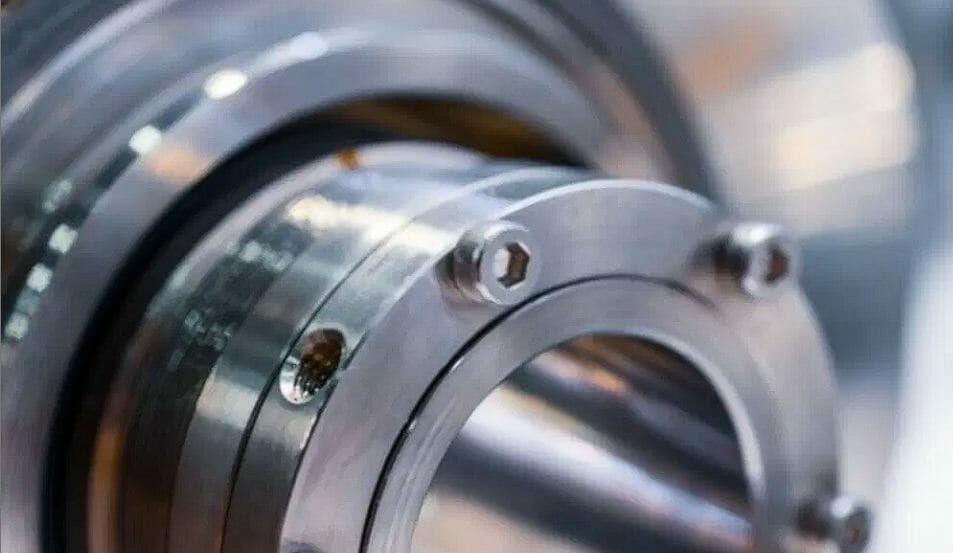
The pressure rating of a schedule 10 stainless steel pipe is a critical factor to consider when selecting a pipe for your application. If a pipe’s pressure rating is too low, it can lead to leaks and failures, endangering the safety of the system and those around it. Thus, it is essential to understand the pressure rating for each specific application and select a pipe with an appropriate pressure rating.
Furthermore, proper pressure rating ensures the integrity and reliability of the system. Selecting the right pipe with the suitable pressure rating ensures that the system performs efficiently and effectively without any issues. Therefore, understanding the pressure rating is crucial in ensuring the safety, performance, and longevity of the system.
Schedule 10 Stainless Steel Pipe Applications

Schedule 10 stainless steel pipes are used in a wide range of industries due to their cost-effectiveness and versatility. These pipes have a lighter wall thickness than other schedules, making them popular for applications where weight and cost are key factors.
One of the most common applications for schedule 10 stainless steel pipes is in plumbing systems. These pipes are used for water supply and drainage systems, as well as for gas distribution. They are also commonly used in HVAC systems, where they are used for air conditioning and ventilation.
Additionally, schedule 10 stainless steel pipes find applications in the oil and gas industry, where they are used for transporting gas and oil. They are also used in chemical processing plants, as they are resistant to corrosion and can withstand harsh chemicals.
Other applications of schedule 10 stainless steel pipes include boiler and heat exchanger tubing, food and beverage processing, and pharmaceutical manufacturing. Understanding the pressure rating of these pipes is crucial in selecting the right pipe for your specific application.
Advantages of Schedule 10 Stainless Steel Pipe

Schedule 10 stainless steel pipes have gained popularity due to their numerous advantages. First and foremost, they are highly cost-effective, making them an ideal choice for projects with budget constraints. Additionally, these pipes are easy to install, reducing both time and labor costs. Their high durability and corrosion resistance ensure a long-lasting performance, making them a reliable choice for various applications.
Another significant advantage is their compatibility with a wide range of fluids and gases. They can be used for conveying water, oil, gas, and even highly corrosive substances, making them a versatile option for several industries, including plumbing, HVAC, and chemical processing.
Furthermore, schedule 10 stainless steel pipes are lightweight, making them easier to handle and transport. They also require less support compared to heavier pipes, further reducing installation costs.
Finally, since these pipes are made of stainless steel, they do not corrode easily, making them environmentally friendly. They can be recycled and reused, reducing waste and minimizing their impact on the environment.
Overall, schedule 10 stainless steel pipes offer a range of advantages, making them a popular choice for various applications. Their cost-effectiveness, ease of installation, durability, and compatibility with various substances make them a reliable option for projects of all sizes.
Limitations of Schedule 10 Stainless Steel Pipe
Schedule 10 stainless steel pipes have many advantages, but it is also important to consider their limitations when selecting them for a project.
One of the main limitations of schedule 10 stainless steel pipes is their lower pressure ratings compared to thicker-walled pipes. This makes them unsuitable for high-pressure applications where thicker walls are required to handle the stress and strain of the system.
In addition, schedule 10 stainless steel pipes may be susceptible to damage in high-pressure applications, which can compromise the integrity of the system. It is crucial to consider the required pressure rating when selecting a pipe to ensure that it is suitable for the intended application and environment.
Despite these limitations, schedule 10 stainless steel pipes remain a popular choice for many applications due to their cost-effectiveness, corrosion resistance, and ease of installation. By carefully considering the limitations and advantages of schedule 10 stainless steel pipes, you can make an informed decision when selecting the right pipe for your project.
Factors to Consider when Selecting Schedule 10 Stainless Steel Pipe
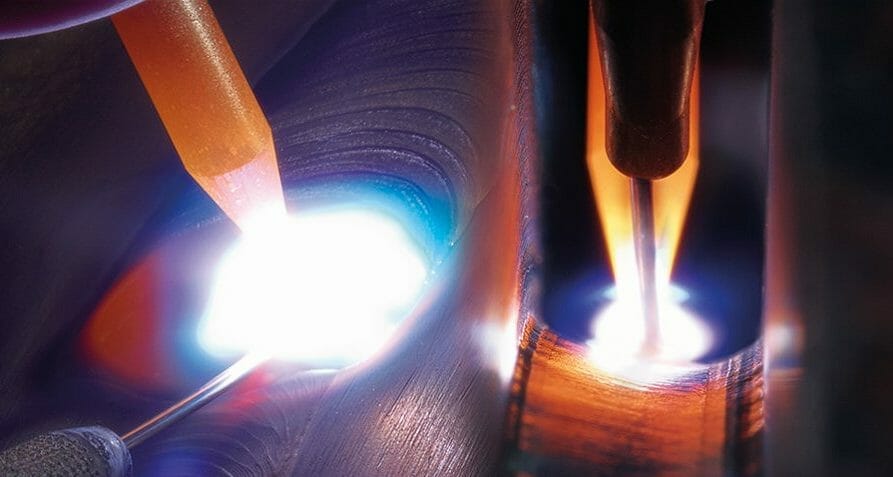
Choosing the right schedule 10 stainless steel pipe for your application involves considering several essential factors. Here are some crucial aspects to keep in mind when selecting a schedule 10 stainless steel pipe:
- Pressure rating: The pressure rating of a pipe is one of the most critical factors to consider. It depends on the intended application and the maximum pressure the system will experience. Selecting a pipe with a pressure rating that is too low may lead to failure and potential hazards.
- Intended application: Different applications require different types of pipes. For example, in the plumbing industry, schedule 10 stainless steel pipes are commonly used for water supply and drainage systems, while in the chemical processing industry, they are used to transport corrosive materials.
- Environmental conditions: Environmental factors, such as temperature and humidity, can impact the performance and lifespan of a pipe. Understanding the environmental conditions is crucial for selecting the appropriate material and ensuring that the pipe can withstand the conditions.
- Compatibility: Compatibility with other components in the system, such as fittings, flanges, and valves, is crucial for ensuring that the system operates efficiently and safely. Choosing the right material and size that complements the other components is important for avoiding leaks and failures.
By taking these factors into account, you can select the right schedule 10 stainless steel pipe for your specific needs, ensuring a reliable and efficient system.
Conclusion
When selecting a schedule 10 stainless steel pipe, it is crucial to understand the pressure rating and its importance in ensuring the safety and integrity of the system. Factors such as material, temperature, size, and wall thickness all influence the pressure rating, and various industry standards and formulas are used to determine the maximum pressure limits.
Schedule 10 stainless steel pipes offer several advantages, such as cost-effectiveness, ease of installation, corrosion resistance, and durability. However, they also have limitations to consider, such as lower pressure ratings compared to thicker-walled pipes and potential susceptibility to damage in high-pressure applications.
When selecting a pipe, always consider the required pressure rating, intended application, environmental conditions, and compatibility with other components in the system. By doing so, you can ensure a successful and safe installation that meets your specific needs.
In conclusion, understanding the pressure rating of schedule 10 stainless steel pipes is essential for selecting the right pipe and ensuring a safe and efficient system. By considering the factors discussed in this guide, you can make an informed decision about the pipe that is best suited for your needs.
Read More : Your Guide to 12 Schedule 10 Stainless Steel Pipe Selection
Can I Use the Schedule 10 Stainless Steel Pipe Pressure Rating for 304 Stainless Steel Pipe?
Yes, the Schedule 10 Stainless Steel Pipe Pressure Rating can also be used for the 304 Stainless Steel Pipe. However, it is always advisable to refer to the 304 stainless steel pipe pressure rating chart to ensure accurate and safe usage based on the specific requirements of your application.
FAQ
Q: What is schedule 10 stainless steel pipe?
A: Schedule 10 stainless steel pipe refers to a specific type of pipe that has a lighter wall thickness compared to other schedules. It is cost-effective and versatile, making it commonly used in various applications.
Q: What factors affect the pressure rating of schedule 10 stainless steel pipe?
A: The pressure rating of schedule 10 stainless steel pipe is influenced by factors such as the material used, temperature, pipe size, and wall thickness. These factors must be considered when determining the suitable pressure rating for a specific application.
Q: How is the pressure rating of schedule 10 stainless steel pipe determined?
A: The pressure rating of schedule 10 stainless steel pipe is determined using industry standards and formulas. These calculations take into account factors like material, temperature, pipe size, and wall thickness to provide maximum pressure limits.
Q: Why is the pressure rating of a pipe important?
A: The pressure rating of a pipe is important as it ensures the integrity and safety of the system. Choosing a pipe with an unsuitable pressure rating can lead to leaks, failures, and potential hazards.
Q: What are the applications of schedule 10 stainless steel pipe?
A: Schedule 10 stainless steel pipe is used in various industries, including plumbing, HVAC, oil and gas, and chemical processing. Understanding the pressure rating helps in selecting the right pipe for specific applications.
Q: What are the advantages of schedule 10 stainless steel pipe?
A: Schedule 10 stainless steel pipe offers advantages such as cost-effectiveness, ease of installation, corrosion resistance, and high durability. These pipes are a popular choice for many projects due to their reliable performance.
Q: What are the limitations of schedule 10 stainless steel pipe?
A: While schedule 10 stainless steel pipe has many advantages, it also has limitations to consider. These include lower pressure ratings compared to thicker-walled pipes and potential susceptibility to damage in high-pressure applications.
Q: What factors should be considered when selecting schedule 10 stainless steel pipe?
A: When selecting schedule 10 stainless steel pipe, factors such as the required pressure rating, intended application, environmental conditions, and compatibility with other components in the system should be considered. These considerations ensure a successful and safe installation.
Q: Why is understanding the pressure rating of schedule 10 stainless steel pipes important?
A: Understanding the pressure rating of schedule 10 stainless steel pipes is crucial for proper pipe selection. By considering factors such as material, temperature, size, and wall thickness, you can ensure that the chosen pipe is suitable for the application, providing a secure and efficient system.
